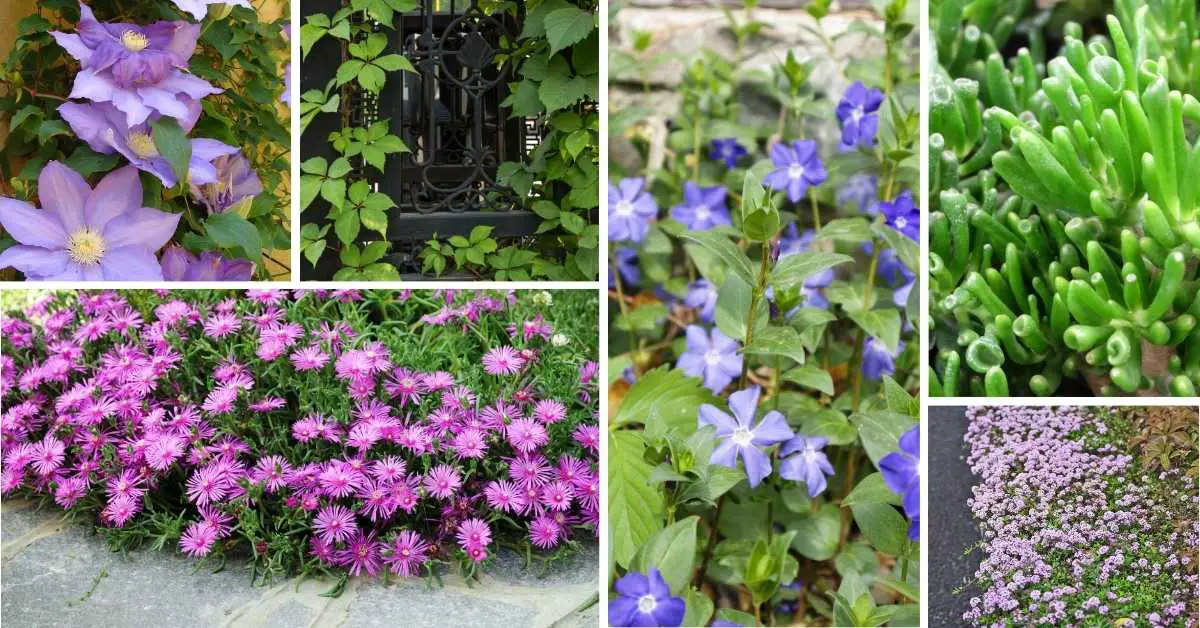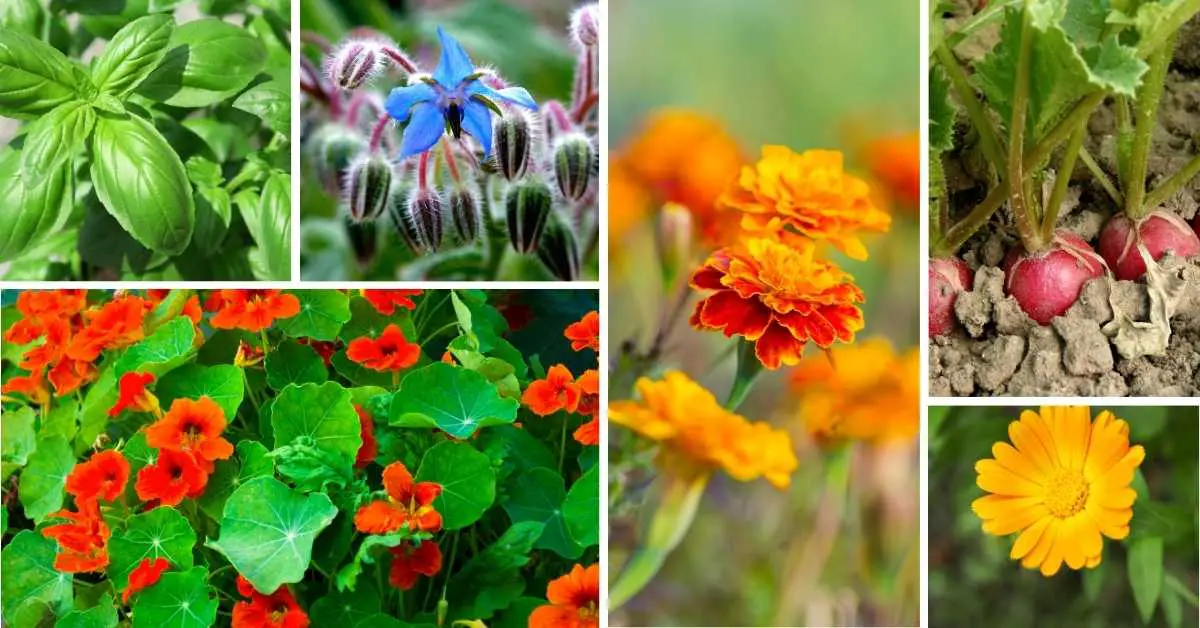You’re about to reveal the secret to growing fresh cilantro right in your own home. It’s easier than you think, and with the right guidance, you’ll be snipping off those fragrant leaves in no time.
First, you’ll need to choose the perfect pot – one that’s deep enough to accommodate cilantro’s long taproot.
But that’s just the beginning. From selecting the best seeds to managing pests and diseases, there are several essential steps to master before you can savor that unmistakable flavor.
So, are you ready to get started and discover the simple tricks to growing cilantro that will make all the difference?
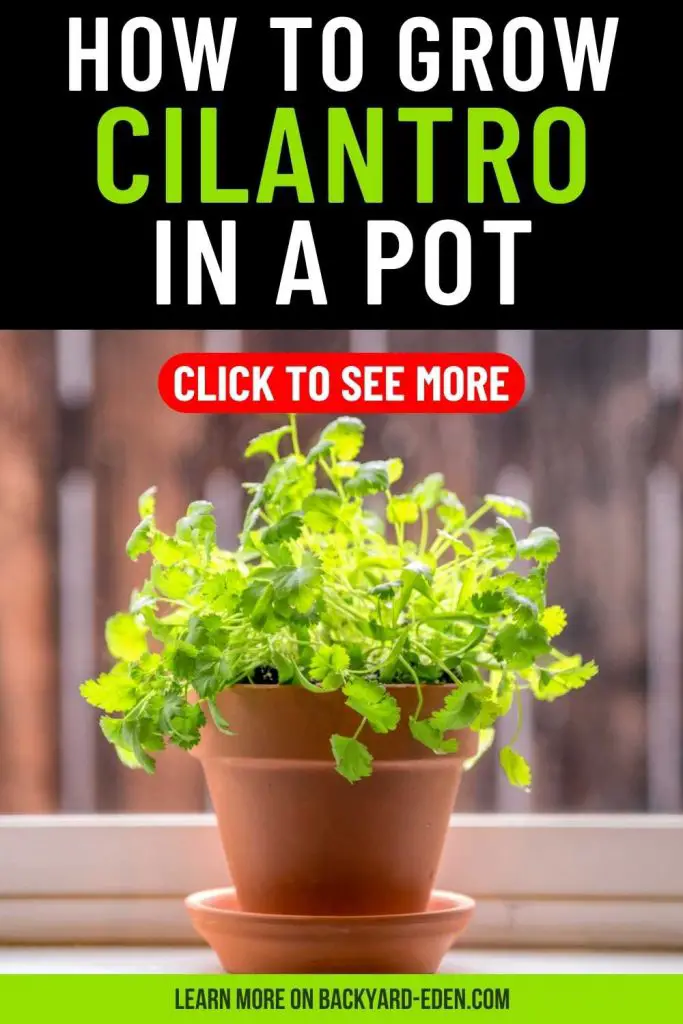
- Choose a pot that is 6-8 inches deep with good drainage and adequate air circulation for healthy cilantro growth.
- Select high-quality cilantro seeds labeled for containers and sow them 1/4 inch deep and 1-2 inches apart.
- Water cilantro when the top inch of soil is dry, and maintain consistent moisture levels and humidity.
- Provide bright, indirect light for 12-14 hours daily, and keep the temperature between 60-70°F with consistent air circulation.
- Fertilize cilantro every 1-2 weeks with a balanced fertilizer high in nitrogen, phosphorus, and potassium for optimal growth.
Choosing the Right Pot
Select a pot that’s at least 6-8 inches deep and has good drainage holes to give cilantro’s taproot room to grow. You’ll want a container that allows for adequate air circulation and water drainage, ensuring your cilantro plants receive the right amount of moisture.
When it comes to pot material, you’ve got options – ceramic, terra cotta, or plastic. Ceramic pots are a great choice, as they retain moisture and regulate soil temperature. Terra cotta pots, on the other hand, are breathable and allow for better aeration. Plastic pots are lightweight and easy to move around.
Whichever material you choose, make sure it’s at least 6-8 inches deep to accommodate cilantro’s taproot. A larger container size will give your plants more room to spread out, but be mindful of the space you have available. Aim for a minimum of 8-10 inches in diameter to allow for optimal growth.
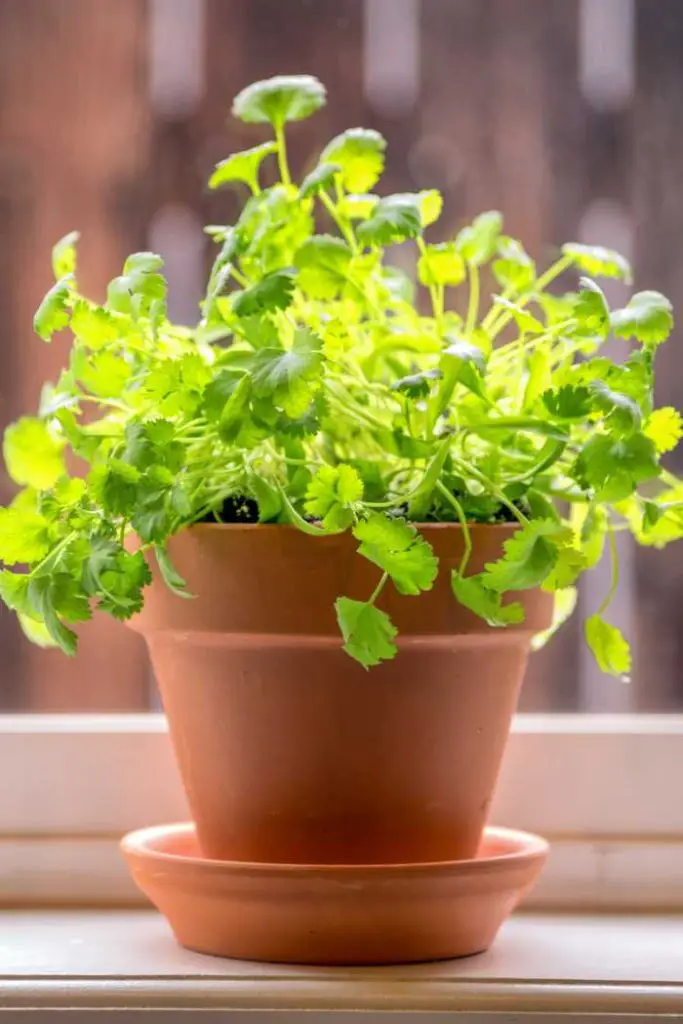
Selecting Quality Cilantro Seeds
With your pot ready, you’re now faced with the essential task of choosing high-quality cilantro seeds that will thrive in their new home. It’s important to select seeds that are fresh, disease-free, and suitable for container growing. Look for seeds that are specifically labeled as ‘container-friendly‘ or ‘indoor growing.’ Check the packaging for the ‘packed for’ date to make sure the seeds are fresh and haven’t been stored for too long. Proper Seed Storage is essential for maintaining seed viability. Make sure the seeds are stored in an airtight container, away from direct sunlight and moisture.
When selecting seeds, consider the strain you want to grow. Some popular varieties for container growing include ‘Santo’ and ‘Calypso’. These varieties are bred for their compact growth habit and high yields. Check the seed packet for information on germination rates and days to maturity. Opt for seeds with high Seed Germination rates (above 80%) for the best results.
Preparing the Soil Mix
As you prepare to plant your cilantro seeds, it’s crucial to get the soil mix just right.
You’ll want to create a blend that’s specifically tailored to cilantro’s needs, as it’s quite particular about its growing conditions.
Soil Composition Matters
You’ll want to create a well-balanced potting mix that drains excess water yet retains enough moisture to support cilantro’s growth, which means combining specific ingredients in the right proportions.
This is essential because cilantro’s roots are prone to rot if the soil is too waterlogged. To achieve the perfect soil structure, mix in some organic amendments like compost or well-rotted manure. These will help improve the soil’s drainage and aeration, allowing cilantro’s roots to breathe and absorb nutrients efficiently.
Aim for a mix that’s around 60% peat moss or coconut coir, 20% perlite or vermiculite, and 20% compost or manure. This blend will provide the right balance of moisture retention and drainage.
Don’t forget to sterilize your potting mix by baking it in the oven or microwaving it to kill any bacteria or fungi that might be present. By taking the time to create a well-balanced potting mix, you’ll be giving your cilantro the best possible start in life.
Optimal Ph Levels
Get your pH meter ready, because testing the acidity level of your potting mix is important, as cilantro prefers a slightly acidic to neutral soil pH, ranging from 6.0 to 7.0. You want to make sure your soil mix isn’t too alkaline, as this can hinder cilantro’s growth. If your mix is too acidic, don’t worry, cilantro has some alkaline tolerance. However, it’s still vital to aim for that sweet spot.
Acidic soils can be a challenge, but you can adjust the pH level by adding lime or sulfur. If you’re using a pre-mixed potting soil, check the label for pH information. You might need to mix in some organic matter like compost or peat moss to balance out the pH.
Sowing Cilantro Seeds Indoors
Sowing cilantro seeds indoors allows you to manage the environment and give your plants a head start on the growing season. By doing so, you can maximize seed germination and guarantee a strong start for your cilantro plants.
To begin, fill a small pot or seed tray with a well-draining seed starting mix. Sow the seeds about 1/4 inch deep and 1-2 inches apart. Cover the seeds with a thin layer of the mix. Water gently but thoroughly.
For ideal indoor climate conditions, place the pot or tray in a warm location with indirect sunlight. The temperature should be around 65-70°F (18-21°C) for best germination. Keep the soil consistently moist but not waterlogged.
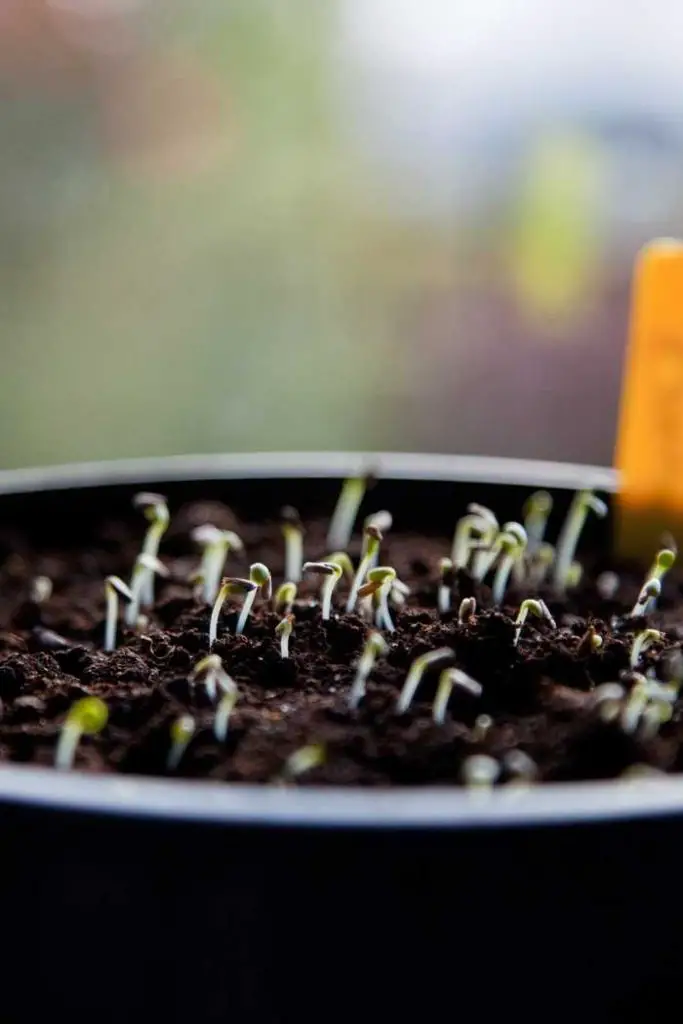
Maintaining a humid environment is crucial, which you can achieve by covering the pot or tray with a clear plastic bag or a cloche. This will help retain moisture and promote healthy seed germination.
With the right conditions, your cilantro seeds should sprout within 7-10 days, and you’ll be on your way to growing a thriving crop of fresh cilantro.
Watering and Humidity Needs
Once your cilantro seeds have sprouted, it’s time to focus on providing the right amount of moisture to support their growth.
You’ll want to water your cilantro when the top inch of soil feels dry to the touch. Avoid overwatering, as this can lead to root rot and other issues. Instead, aim to keep the soil consistently moist, but not waterlogged.
When it comes to water quality, use filtered or distilled water to prevent any impurities from affecting your plants. You can also use a humidity sensor to monitor the moisture levels in the air and adjust your watering schedule accordingly.
Ideally, cilantro prefers a humid environment with around 50-60% relative humidity. By maintaining the right balance of moisture, you’ll be able to promote healthy growth and prevent common issues like leaf drop and bolting.
Providing Optimal Light Conditions
You’ll want to position your pot in a spot that receives bright, indirect light, as direct sunlight can cause cilantro to become scorched and bitter. East-facing windows are ideal, as they provide gentle morning light that promotes healthy growth.
If you don’t have a window with natural light, don’t worry! You can also use artificial lighting to provide the necessary illumination. LED grow lights or fluorescent lights work well, and you can adjust their intensity to suit your cilantro’s needs.
When using artificial lighting, aim to provide 12-14 hours of light per day. This will encourage your cilantro to grow bushy and robust. Be sure to place the lights at the correct distance from your pot, usually around 6-8 inches, to avoid burning your plants.
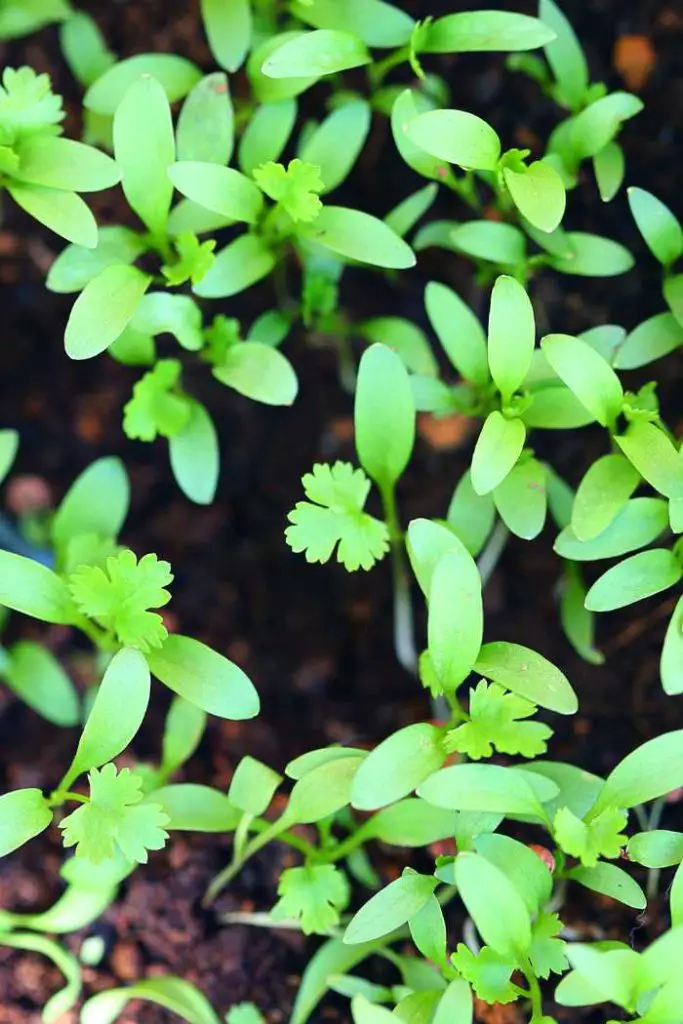
Maintaining Temperate Conditions
Sixty to seventy degrees Fahrenheit is the ideal temperature range for your potted cilantro, allowing it to thrive without becoming leggy or stressed. You’ll want to maintain this temperature range to guarantee optimal growth and prevent your cilantro from bolting prematurely.
To achieve this, you can implement climate control measures, such as placing your pot near a window with a consistent temperature or using a space heater/cooler to regulate the temperature.
It’s also essential to take into account thermal regulation, especially if you’re growing cilantro indoors. Avoid placing your pot near heating vents, radiators, or air conditioning units, as they can cause temperature fluctuations.
Instead, opt for a spot with consistent air circulation to prevent the buildup of heat or cold.
Fertilizing Your Cilantro
With your potted cilantro thriving in its ideal temperature range, it’s time to focus on feeding it with the right nutrients to promote healthy growth and prevent nutrient deficiencies. You’ll want to choose a fertilizer that’s specifically formulated for herbs, as they require a unique balance of nutrients. Look for a fertilizer that’s high in nitrogen, phosphorus, and potassium (NPK), as these macronutrients are essential for leafy greens like cilantro.
When it comes to fertilizer types, you’ve got a few options. Organic fertilizers, like compost or fish emulsion, release nutrients slowly and promote soil health. Synthetic fertilizers, on the other hand, provide a quick burst of nutrients but can be harsh on the soil. You can also opt for a balanced fertilizer, which provides an equal ratio of NPK.
Aim to fertilize your cilantro every 1-2 weeks, depending on the type of fertilizer you’re using. Remember to follow the instructions on the label and start with a small dose to avoid burning your roots. By maintaining a balanced nutrient intake, you’ll be enjoying fresh, flavorful cilantro in no time!
Pruning and Training Cilantro
How often do you find yourself wondering when to prune your cilantro to encourage bushy growth and prevent it from flowering prematurely? Pruning is an important step in cilantro care, and it’s easier than you think.
By pinching off the top sets of leaves, you’re encouraging the plant to focus its energy on producing more foliage rather than seeds. This technique, known as pinching, should be done regularly to maintain a bushy shape.
As you prune, use shaping styles that promote air circulation and sunlight penetration. Remove any weak or spindly stems, making way for stronger growth. Pinch off flower buds as they form to redirect the plant’s energy towards leaf production.
By doing so, you’ll be rewarded with a lush, fragrant herb perfect for adding flavor to your favorite dishes. Remember, pruning is an ongoing process, so stay on top of it to keep your cilantro thriving.
With regular pinching and shaping, you’ll be enjoying a bountiful harvest in no time.
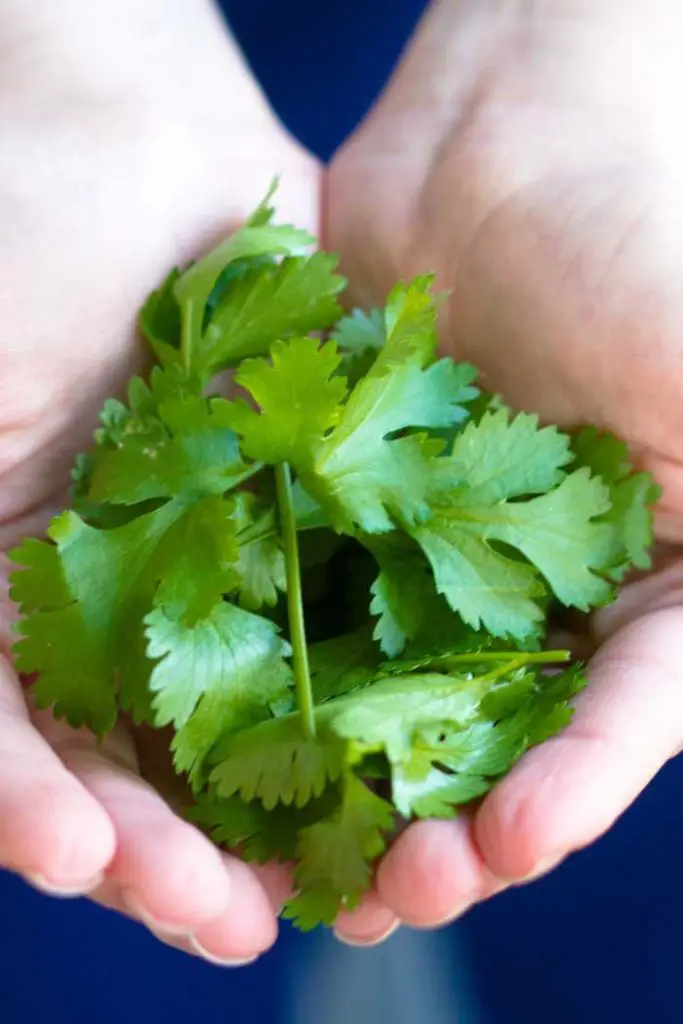
Managing Pests and Diseases
As you’re busy pruning and training your cilantro to achieve that perfect bushy shape, you’ll also want to keep a watchful eye out for any pests or diseases that might be lurking in the shadows, ready to wreak havoc on your hard work.
Aphids, spider mites, and whiteflies are common culprits that can cause significant damage to your cilantro plant. To manage these pests, encourage natural predators like ladybugs and lacewings to visit your pot by planting flowers that attract them nearby. You can also use organic pesticides like neem oil or pyrethrin to control infestations.
Fungal diseases like root rot and leaf spot can also affect your cilantro, especially if the soil is too moist or there’s poor air circulation. Prevent these issues by ensuring good drainage, providing adequate spacing, and watering carefully. Inspect your plant regularly, and remove any affected leaves or stems to prevent the disease from spreading.
Harvesting Fresh Cilantro
You’ll know it’s time to start harvesting your cilantro when the plants reach about 6-8 inches tall and the leaves are large enough to use in cooking.
To encourage bushy growth and prevent the plants from flowering, pinch off the top sets of leaves, leaving the stems intact. This will prompt the plant to produce more cilantro clippings.
Harvest your fresh bunches in the morning, when the leaves are at their most fragrant and flavorful. Simply snip off the leaves you need with scissors, making sure to leave about an inch of stem intact to allow the plant to continue growing.
Regular harvesting will promote healthy growth and prevent the cilantro from going to seed. You can harvest your cilantro as often as every 1-2 weeks, depending on how quickly it grows.
Remember to harvest your cilantro before it starts to bolt, or grow flowers, as this can make the leaves taste bitter.
Storing Cilantro for Later Use
Once you’ve harvested your fresh cilantro, it’s time to think about preserving the bounty for later use, and there are several ways to store it to keep its flavor and aroma intact.
You can freeze cilantro to use in soups, stews, and sauces. Simply chop the leaves, place them in an airtight container or freezer bag, and store them in the freezer. When you’re ready to use them, simply add the frozen cilantro to your dish.
Another option is to use dehydrating techniques to dry the cilantro leaves. You can air-dry them by tying them in small bunches and hanging them upside down, or use a food dehydrator to speed up the process. Once dry, store the cilantro in airtight containers to preserve its flavor and aroma.
You can also make cilantro ice cubes by mixing chopped cilantro with water and freezing it in ice cube trays. These are perfect for adding a burst of flavor to soups and stews.
Troubleshooting Common Issues
If you’ve encountered problems with your potted cilantro, don’t worry – it’s not uncommon, and there are simple solutions to get your crop thriving again. Cilantro Confusion can set in when you’re not sure what’s going wrong, but by identifying the issue, you can take action.
One common problem is Wilting Woes, where your cilantro leaves start to droop and lose their vibrancy. This is often caused by underwatering or overwatering. Check the soil moisture by sticking your finger into the soil up to the knuckle. If it feels dry, it’s time to water. If it’s already moist, wait a day or two before watering again. You can also prune the affected leaves to encourage new growth.
Another issue is slow growth or bolting, which can be caused by insufficient light or temperature fluctuations. Make sure your pot gets at least 4-6 hours of direct sunlight, and maintain a consistent temperature between 65-75°F (18-24°C).
With a little troubleshooting, you can overcome these common issues and enjoy a thriving crop of cilantro in no time.
Frequently Asked Questions
Can I Grow Cilantro in a Pot Outdoors Year-Round?
You can grow cilantro year-round outdoors in a pot, but in cold climates, it’ll need protection from frost; choose a high-quality potting mix with good soil quality to guarantee healthy growth and consider bringing it indoors during harsh winter months.
How Often Should I Rotate My Cilantro Pot for Even Growth?
You’ll want to rotate your pot every 2-3 days to guarantee even growth, adjusting pot orientation to maximize sunlight exposure; this trick promotes balanced leaf development and prevents lopsidedness.
Can I Use Cilantro Grown in a Pot for Cooking Immediately?
You can snip and savor your pot-grown cilantro immediately, but freshness matters! Harvest at the right timing, typically when leaves are young and tender, to reveal the best flavor and aroma in your dishes.
Will Cilantro in a Pot Attract Beneficial Insects Like Bees?
You’ll be thrilled to know that your potted cilantro will attract pollinator friends, like bees, providing them with essential bee habitats, which in turn will boost your herb’s health and your cooking creations!
Can I Grow Other Herbs Alongside Cilantro in the Same Pot?
You can definitely grow other herbs alongside cilantro in the same pot, considering herb combinations that thrive together. Make the most of your pot space by pairing cilantro with parsley, dill, or basil for a harmonious mix.
Conclusion
You’ve made it! With these simple steps, you’re well on your way to growing delicious cilantro in a pot.
Remember to keep the soil moist, fertilize regularly, and prune often to encourage bushy growth.
Don’t be discouraged if you encounter issues – troubleshoot and adjust as needed.
Happy growing, and enjoy your fresh, fragrant cilantro in your favorite dishes!


